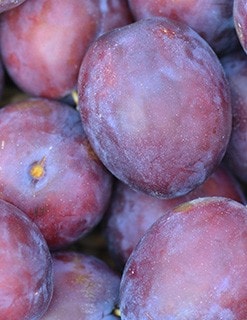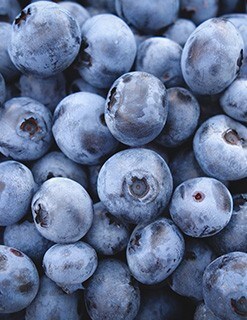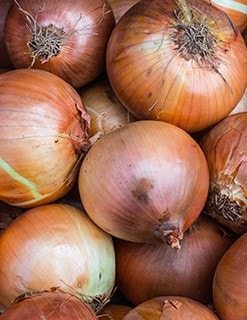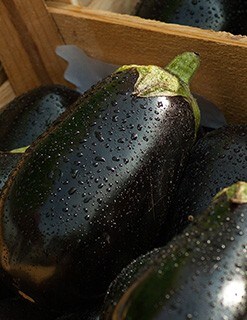
Plums
Plums are low in calories, contain vitamin A, C & Fibre and also contain phytonutrients - antioxidants that help prevent heart disease and cancer. As there are so many varieties, colour isn’t a useful guide to ripeness. Look for a smooth, unbruised skin with a chalky skin. They can be halved and roasted, poached whole or stewed.
Did you know?
Prunes are really just dried plums.
Our recipe tip: Apple and plum crumble

Blueberries
Blueberries have the highest level of antioxidant activity. Acids such as lemon juice or vinegar cause their blue pigment to turn reddish. Blueberries go well with chicken and lemon, blueberry sauce goes well with duck and pork. The perfect blueberry should be dusty in colour.
Did you know?
Blueberries are brain food and they boost focus and memory.
Our recipe tip: Banana fritters with blueberry compote

Onions
Onions smell is caused by volatile acids just below the skin, these acids are removed during cooking which is why a cooked onion is never as strong as a raw one. Raw onions are a useful source of fibre, vitamin C and folic acid.
Did you know?
Onions actually contain more sugar than apples! The active chemical that gives the onion its scent, hides their sweetness.
Our recipe tip: Pan-fried Pollock with Lyonnaise onions, onion consommé

Aubergine
Aubergines are usally grilled, fried, steamed or stewed. You may find them in the French Ratatouille, in Greek Moussake or in Oriental dips. It contains potassium, vitamin C and vitamins of the B group. Their little intense flavor requires spices and herbs such as rosemary, thyme or sage.
Did you know?
The fruit is called 'egg-fruit', because in former times they were still yellow or white and had the shape of a chicken egg.
Our recipe tip: Teriyaki glazed rice & vegetable skewers